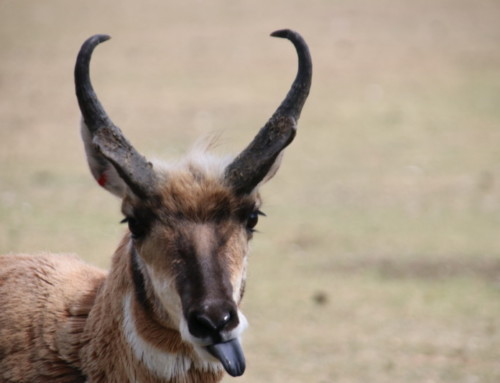Goeldi’s Marmoset
“Foraging monkeys,
Scamper along tree branches.
Look! They found some bugs.”
Residents in the Kinsmen Childrens’ Zoo are Goeldi’s Marmosets, Goeldi’s Monkeys, or just Callimicos. Their scientific name is Callimico goeldii. These are a South American species, the only one in their genus, and were discovered relatively recently (1904) by the Swiss naturalist Emil August Goeldi.
All types of marmosets are quite small; the Goeldi’s bodies are 20 to 23 cm long with a tail length of 26 to 30 cm. The weight range in the wild is 350 to 400 grams; males weigh a few grams more than the females. Their fur is brownish-black and longer hairs drape over the neck and shoulders like a mane. Occasionally the fur may have lighter highlights. The females usually have only one baby at a time but may be pregnant twice in a year. The mother carries the babies for the first two weeks, during the third week the father will carry them and then, after that, the entire troop takes turns. At that age they will start to eat solid food given to them by the adults. They will begin to forage on their own at about 7 weeks of age but will continue to nurse for up to three months. In any group the females generally outnumber the males by two to one. Goeldis like to sleep in dense tangles of leaves or vegetation. In captivity the life span may be as much as 20 years. Unlike other South American monkey species, they do not have a prehensile tail.
These monkeys have a large number of different vocalizations that can be heard over distances. They also use scent, facial and body language to communicate. They can leap about 4 meters horizontally without losing height. Daily travel is about 2 km within a range of 30 to 80 hectares of territory.
They inhabit the understory of the primary tropical forests that they live in, jumping, climbing and traveling among the shrubs, vines and low tree branches staying within five meters of the forest floor except to gather fruit. Insects, small vertebrates and various fruits are the main foods, but in scarce times they will eat fungi – a rare thing for tropical primates. They will often join up with other Marmosets, Tamarins, Spider Monkeys, and Capuchins while going about their daily activities. This lends them some protection from predators, as there is safety in numbers. The predators thought to be most dangerous are bush dogs, coati, puma, snakes and various raptors.
Goeldi’s populations are quite small and they are found in areas of Bolivia, Peru, and Brazil but the distances between populations may be large. Their population status is quite vulnerable since their populations are small and the tropical forests are rapidly disappearing. In addition, they are trapped and hunted particularly for the pet trade. They are on Appendix 1 of the CITES (Convention on International Trade in Endangered Species) list and are on the IUCN (International Union for Conservation of Nature and Natural Resources) Red List as Vulnerable. This status should mean that commercial import and export are banned but it is not very strictly followed in some countries.
The Saskatoon Forestry Farm Zoo has a family housed in the Children’s Zoo in the space next to the Capuchins. The enclosure is only visible from the outside windows, which can be a challenge when the sun is bright. They are charming animals to watch.

